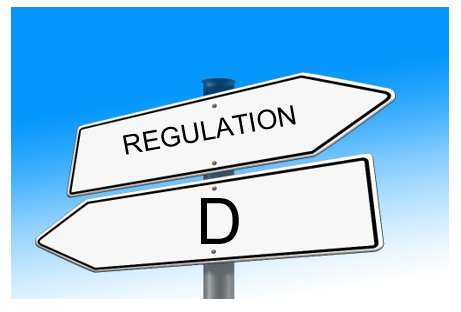Regulation D Investment : What it is
Are you interested in investing your hard-earned money and wondering how to make wise investment choices? Look no further than Regulation D Investment, a powerful tool that offers opportunities for both individuals and businesses alike. In this post, we will explore everything you need to know about Regulation D Investment, its benefits, and how you can get started. So, let's dive right in!
The Basics of Regulation D Investment

Regulation D Investment, also known as Reg D, is a provision under the United States Securities Act of 1933. It offers certain exemptions from the rigorous registration requirements that apply to public offerings of securities. In simple terms, it allows businesses to raise capital by selling securities to private investors without having to go through the costly and time-consuming process of registering with the Securities and Exchange Commission (SEC).
This regulation is a crucial tool for startups and companies that are looking to raise funds in a more streamlined and efficient manner. It enables them to access capital quickly while complying with specific guidelines set forth by the SEC.
Key Benefits of Regulation D Investment
Now that we have defined what Regulation D Investment is, let's explore some of the key benefits it offers:
- Access to Capital: Regulation D Investment allows businesses to raise capital from accredited investors, including high-net-worth individuals, venture capitalists, and hedge funds. With these investment opportunities, businesses can secure the funding they need to grow and expand their operations.
- Reduced Costs and Time: By utilizing Regulation D Investment, businesses can avoid the lengthy and expensive process of registering securities with the SEC. This exemption helps to reduce costs associated with legal and compliance fees, allowing businesses to focus their resources on core operations.
- Flexibility in Fundraising: Regulation D Investment offers flexibility in soliciting and accepting investments. It provides businesses with the freedom to tailor their fundraising efforts according to their specific needs, allowing them to target the right investors who align with their mission and goals.
How to Get Started with Regulation D Investment
To kickstart your Regulation D Investment journey, follow these steps:
- Assess Your Investment Goals: Determine your investment objectives, risk tolerance, and desired returns. This will help you align your investment choices with your financial goals.
- Find Accredited Investors: Connect with accredited investors who have a track record of investing in startups and businesses. Networking events, angel investor groups, and online platforms can help you find potential investors who may be interested in your investment opportunity.
- Create an Investment Pitch: Craft a compelling investment pitch that clearly communicates your business model, growth potential, and how the investment will be used. Highlight the benefits for investors and provide financial projections to bolster your case.
- Comply with SEC Regulations: Work closely with legal advisors who specialize in securities law to ensure that you comply with the specific guidelines outlined by the SEC. This will help you avoid potential legal and regulatory pitfalls.
- Execute Your Investment Strategy: Once you have found interested investors and have completed the necessary compliance paperwork, you can execute your investment strategy. Keep investors informed, provide regular updates, and fulfill your commitments as outlined in your investment pitch.
Frequently Asked Questions (FAQ)
Here are some commonly asked questions about Regulation D Investment:
- What is an accredited investor?
An accredited investor is an individual or entity that meets certain income or net worth requirements, allowing them to invest in certain securities not available to the general public. These requirements are typically set by securities regulators or governing bodies.
- What are the limitations of Regulation D Investment?
While Regulation D Investment offers flexibility and exemptions from registration, it is crucial to understand the limitations and constraints. These include limitations on the number of investors, solicitation restrictions, and restrictions on the resale of securities.
- How does Regulation D Investment differ from other investment options?
Regulation D Investment offers unique advantages compared to other investment options. Unlike public offerings, it allows businesses to raise capital privately, which can be more convenient and cost-effective. Additionally, it provides flexibility in soliciting and accepting investments, giving businesses more control over their fundraising efforts.
Now that you have a comprehensive understanding of Regulation D Investment, its benefits, and how to get started, you are well-equipped to explore this option for your investment needs. Remember to consult with legal advisors and conduct thorough due diligence before making any investment decisions. Good luck!
Sources:
[1] https:\/\/www.dechert.com\/content\/dam\/lawyerheadshots\/d\/marjolein-de-backer.jpg
[2] http:\/\/vc-list.com\/wp-content\/uploads\/2018\/07\/startup-funding-form-d.jpg
Regulation Of Foreign Direct Investment
 Image Source : www.dechert.com
Image Source : www.dechert.com Regulation D Resources
regulation
Stellar Labs | Resources | Why You Aren’t Getting Return On L&D Investment
 Image Source : www.stellarlabs.eu
Image Source : www.stellarlabs.eu Alternative Investments Management: Regulation D Offering
 Image Source : atozinvestment.blogspot.com
Image Source : atozinvestment.blogspot.com Calaméo - Fiches Pays / Corpus La Régulation D'une Couverture Maladie
 Image Source : www.calameo.com
Image Source : www.calameo.com Regulation D Resources
 Image Source : regdresources.com
Image Source : regdresources.com Understanding SEC Regulation D And Form D - Startup Funding Advice
form author vc list regulation publicity william jr investment sponsors companies stage early startup funding
How Initial Coin Offerings May Utilize Regulation D Exemptions
 Image Source : investmentbank.com
Image Source : investmentbank.com regulation reg exemptions offerings initial utilize coin
Stellar labs. How initial coin offerings may utilize regulation d exemptions. Regulation d resources. Regulation reg exemptions offerings initial utilize coin. Regulation of foreign direct investment